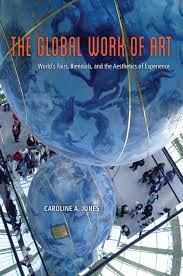The art world is experiencing a remarkable phenomenon—the rapid growth of international biennials. Once confined to historic centers like Venice, these large-scale exhibitions now flourish in cities across Asia, Latin America, and the Middle East. Far from being simple art events, they have become platforms for economic growth, cultural diplomacy, and social dialogue.
What Sets Biennials Apart?
A biennial is more than just an exhibition—it’s a cultural festival held every two years that brings together artists, curators, and audiences from across the globe. The tradition started with the Venice Biennale in 1895, but the format has since evolved, producing hundreds of similar events worldwide.
Unlike commercial art fairs, biennials are theme-driven. They focus on urgent issues like climate change, migration, decolonization, or technology, making them deeply relevant in today’s fragmented world.
New Cultural Hotspots
The recent surge of biennials demonstrates a shift in the global art map.
- Latin America: The São Paulo Biennial remains a cornerstone, spotlighting Brazilian and regional talent for over 70 years. Bogotá has also joined the movement, building a stronger cultural identity for Colombia.
- Eurasia: The Istanbul Biennial has earned global respect for addressing political and cultural intersections, while Bukhara in Uzbekistan is positioning itself as a surprising new stage for Central Asia’s creative voices.
- Other Regions: From Sharjah to Dakar, cities are leveraging biennials to present themselves as modern cultural hubs.
By doing so, these cities not only showcase art but also strengthen tourism and international visibility.
Economic and Social Benefits
The economic footprint of biennials is undeniable. Tourism, hospitality, and local businesses see a surge whenever these events take place. Venice’s biennial attracts hundreds of thousands of visitors annually, while smaller cities use biennials to kickstart urban renewal projects and global branding campaigns.
On the social side, biennials amplify diverse and marginalized voices. Artists from indigenous groups, underrepresented regions, and the Global South gain a chance to present their stories, challenging Euro-centric narratives that have long dominated art institutions.
Why Biennials Keep Growing
One reason biennials thrive even amid global uncertainty is their dual focus on local culture and universal relevance. They celebrate the uniqueness of a host city while engaging audiences in global conversations.
This makes them attractive to governments and private sponsors alike, who see biennials as instruments of soft power, diplomacy, and cultural identity.
Challenges Facing the Biennial Wave
Despite their popularity, biennials face criticism and risks:
- Commercialization: Some argue that repetition and brand-driven agendas dilute their authenticity.
- Environmental Impact: International travel and large-scale exhibitions raise sustainability concerns.
- Financial Instability: Smaller biennials depend heavily on grants and sponsorships, making continuity uncertain.
Balancing growth with responsibility is essential for their future.
The Next Chapter of Biennials
The coming years are expected to reshape the biennial format:
- Eco-Friendly Models: Sustainable materials, reduced travel, and carbon-neutral operations.
- Digital Integration: Virtual tours, augmented reality exhibitions, and global online access.
- Diversity at the Core: Stronger focus on artists from Africa, South Asia, and indigenous communities.
- Interdisciplinary Collaboration: Merging art with technology, science, and social activism.
Conclusion
The boom of global biennials reflects the enduring role of art in connecting people, even in times of division. They are cultural showcases, economic drivers, and platforms for dialogue. From Venice to Bogotá, Istanbul to Bukhara, these events are proof that creativity continues to unite communities across borders.
As the biennial model evolves, it will not only shape the future of the art world but also influence how cities engage with global culture in the decades ahead.



